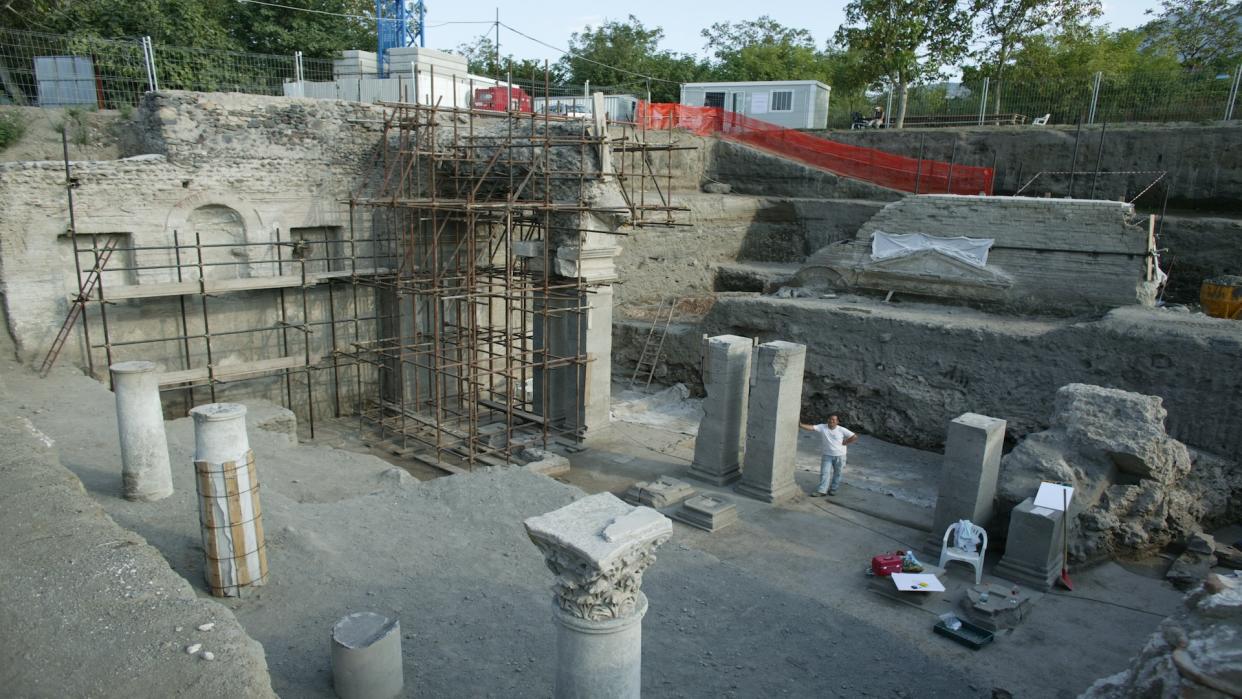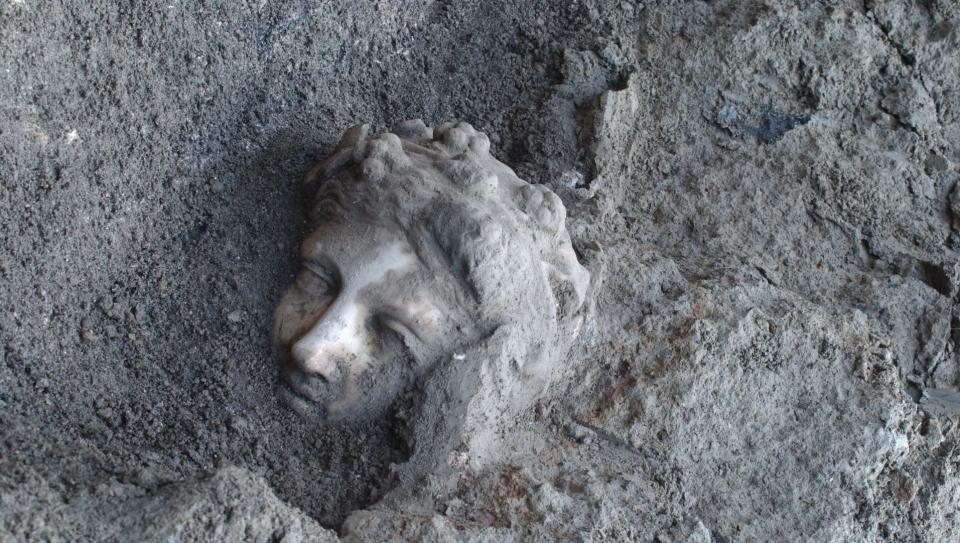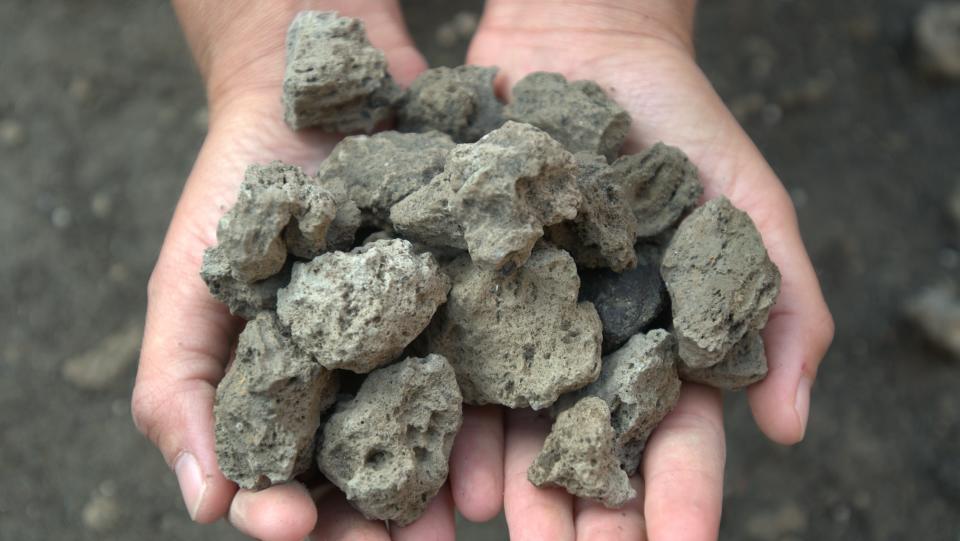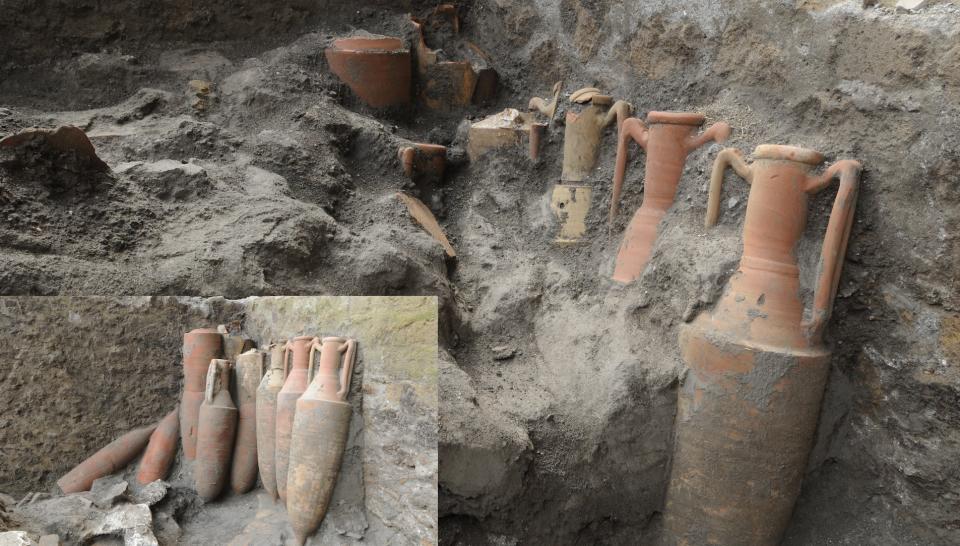Villa near Mount Vesuvius may be where Augustus, Rome's 1st emperor, died

- Oops!Something went wrong.Please try again later.
The ruins of a Roman villa near Mount Vesuvius, discovered under the remnants of another villa built above it many years later, may have been where Augustus, the first Roman emperor, drew his last breath, archaeologists say.
The earlier villa, which excavations suggest was inhabited before the first century A.D., seems to have been destroyed in the devastating eruption of Mount Vesuvius in A.D. 79, and the later villa was built there in the second century.
Researchers at the University of Tokyo have worked at the site for more than 20 years and now hope further excavations will establish that the earlier villa is indeed the place where Augustus died in A.D. 14.
"Our site is probably the only one, or one of only the very few, possibilities that we have," Mariko Muramatsu, an archaeologist at the University of Tokyo who's leading the project, told Live Science.
She noted that the site corresponds with writings by the Roman historians Tacitus, Suetonius and Cassius Dio, who recorded that Augustus died in A.D. 14 at his family's villa near Nola. But the precise location of the villa is unknown, Muramatsu said. The modern town of Nola is about 5 miles (8 kilometers) northeast of the archaeological site at Somma Vesuviana, on the northern slopes of Vesuvius.
Related: The 5 craziest ways emperors gained the throne in ancient Rome

Under the volcano
The second-century villa at Somma Vesuviana was destroyed by an eruption of Vesuvius in the fifth century, and its buried ruins were discovered in 1929. They were identified as the possible location of Augustus' villa, but a lack of funding prevented the site from being explored further.
In 2002, the University of Tokyo team and local archaeologists started work at the site and recovered many beautiful marble statues and other artifacts. But studies of the archaeological layers showed they dated to after the A.D. 79 eruption.
Now, as archaeologists have dug into much deeper layers of the site, they've discovered ruins of part of an earlier villa that was built there before the eruption and was buried by layers of rock and ash ejected by the volcano.

In addition, their investigations have established that the eruption also devastated parts of the volcano's northern slopes. Until now, it was thought that the A.D. 79 eruption mainly affected towns in the south, like Pompeii.
"We now have clear evidence that shows … the eruption of A.D. 79 destroyed a building under the villa that we already have," Muramatsu said, referring to the second century structure.
Some of the features found so far seem to be a large room used as a warehouse and parts of the earlier villa's private baths. "By studying these structures, we can understand better the building and the nature of the site," Muramatsu said.
Her team now hopes to secure funding to enable further excavations that could prove this was the villa where Augustus died.

First emperor
Augustus, born Gaius Octavius in Rome in 63 B.C., was the great-nephew and adopted son of the Roman general and politician Julius Caesar, who was assassinated in 44 B.C.
After Caesar's death, Augustus took power in Rome with Caesar's friend Mark Antony and became its sole ruler after his defeat of Antony at the Battle of Actium in 31 B.C.
Augustus portrayed himself as the "first among equals" in the senate — Rome's governing assembly — but he ruled the former Roman Republic with an iron fist and is regarded as the first Roman emperor.
After a long and prosperous reign, Augustus died in 14 A.D. — rumors said he was poisoned by his wife, Livia — upon which his adopted son Tiberius (Livia's natural son) became emperor.
RELATED STORIES
—Statue of slain Roman emperor dressed as Hercules found near sewer in Rome
—8 powerful female figures of ancient Rome
—Newfound ancient Egyptian sphinx statue may depict Roman emperor Claudius, but not everyone agrees
Pedar Foss, an archaeologist and classical historian at DePauw University in Indiana and author of "Pliny and the Eruption of Vesuvius" (Routledge, 2022), is not involved in the Somma Vesuviana project. He told Live Science in an email that it was good to see that such a worthwhile archaeological investigation was proceeding. However, he noted that there was not yet any proof that the earlier villa was that used by Augustus.
"It is only suggestive of, not proof of, an association with Augustus himself," he said. "More specific evidence would be necessary."

